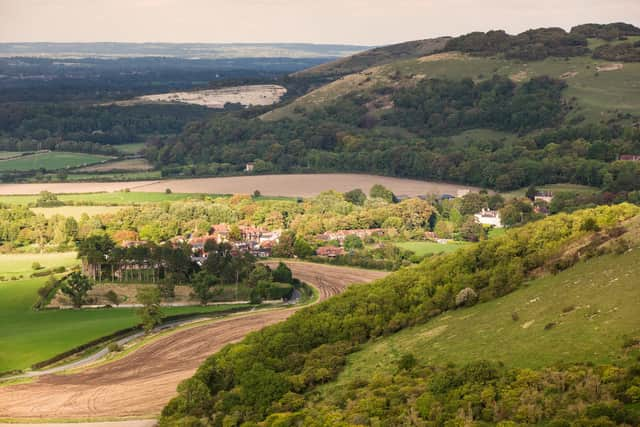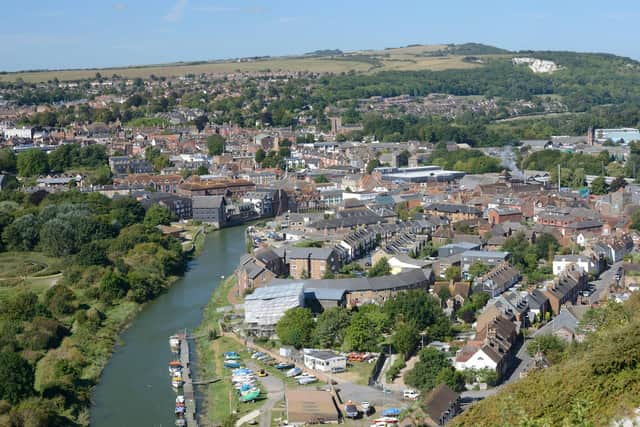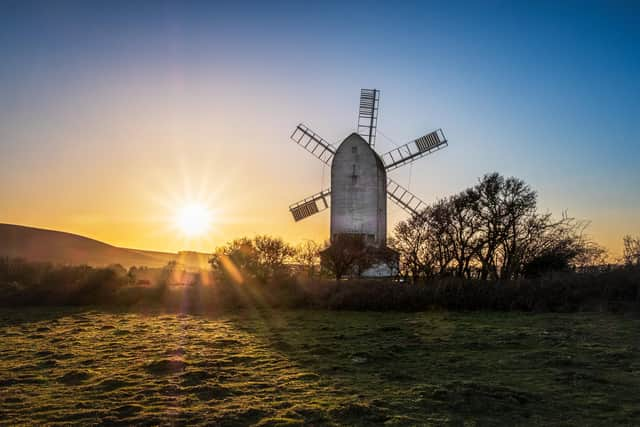Conservation Area: What is a conservation area and why they are important
and live on Freeview channel 276
The notion of ‘conservation areas’ started after the Second World War when the government started to put in place systems to protect the best of the historic environment.
In the South Downs National Park it ranges from the historic market towns of Lewes, Petworth and Midhurst through many villages to individual sites of grouped buildings.
Advertisement
Hide AdAdvertisement
Hide AdMark Waller-Gutierrez leads the specialist team in the South Downs National Park Authority’s planning directorate. This team includes two conservation officers dedicated to helping to preserve and enhance the many conservation areas in the National Park.


Mark said: “Initially, this focused on listed buildings, but with time came a growing recognition that broader areas, not just individual buildings, had a value that was worthy of protection and management. This value comes not just from the buildings in the conservation area, which can include both listed buildings and others of varying quality, but also the spaces between those buildings.
“Today conservation areas defined legally as ‘areas of special architectural or historic interest, the character or appearance of which it is desirable to preserve or enhance’.”
There are 167 conservation areas in the National Park, these are important to preserve what makes the National Park so special from the Norman castles to country houses.
Advertisement
Hide AdAdvertisement
Hide AdMark said: “The South Downs National Park has a wonderful inheritance of buildings and standing structures from the past thousand or so years of human habitation.


“From the Saxon tower of Sompting Church, to the hurried invasion defences of 1940, a rich pattern of settlement and development is apparent in almost every corner of the landscape. There are Norman castles, a rich legacy of churches of every date and famous country houses, set in designed landscapes of the highest quality.
“This stunning heritage in our built environment and landscape is part of what makes the National Park so special and one of many reasons it was designated for the nation.”
For people who decide to buy in a conservation area there are a number of things to keep in mind, Mark says that its important to stress that conservation areas should not be regarded as ‘preservation’ areas or museums.
Advertisement
Hide AdAdvertisement
Hide AdIt is not intended to prevent all change, rather to ensure that change is carefully considered in planning decisions and doesn’t spoil the overall character of the town or village.


Mark said: “There’s a general expectation that older buildings making a positive contribution will be retained and the features that make them special will be conserved.”
If you own property in a conservation area you can’t demolish it without planning permission – and you would normally be required to give full details of any development proposed to replace it.
Where consent is granted, conditions or legal agreements should also be expected to ensure that proposals are actually followed through in a manner that protects the setting of neighbouring property and the wider street scene.
Advertisement
Hide AdAdvertisement
Hide AdPermitted Development Rights normally enjoyed by householders are modestly constrained by Conservation Area status.
Mark added: “The exception to this is if your property is covered by an Article 4 Direction. This is likely to have a more restrictive impact on the external works you can undertake without an application for planning permission.
“If you own a tree in a conservation area you’re obliged to offer six weeks written notice of your intention to fell, lop or otherwise destroy it. This allows the Authority time to raise a Tree Preservation Order in cases where local amenity and public interest demands it.”
Mark added: “Conservation areas are often highly desirable places to live, not only for having wonderful heritage on people’s doorsteps but as vibrant places with nature, green spaces, recreation opportunities and all the physical and mental benefits these things bring for people choosing to live in them.”
Advertisement
Hide AdAdvertisement
Hide AdThe South Downs National Park has recently produced a detailed design guide that is useful for anyone who wishes to develop in a conservation area.
It’s basically a wishlist in terms of what development proposals should include, such as avoiding building height that is overly dominating and referencing building traditions of the town or village.
Mark said: “I know our conservation officers consider it a real honour and privilege to work in the South Downs National Park. This entire region is oozing with historic charm from so many different eras and it means no two days are the same in this job.”
The Home Owners Alliance also has a lot of information for people who are considering buying in a conservation area or buying a listed property.
You can view the South Downs National Park information, here www.southdowns.gov.uk/planning-policy/supplementary-planning-documents/supplementary-planning-documents/adopted-design-guide-spd/